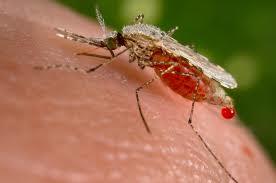|
GUY1 is developmentally regulated and is expressed in the embryonic stage of the mosquito life cycle. Once expressed, GUY1 is thought to bind to DNA, due to its specific helix-turn-helix shape, a structural domain commonly associated with DNA binding capabilities. The binding of GUY1 would then allow the expression of other genes, possibly involved in sex determination or dosage compensation. Expression of GUY1 in female mosquitoes results in total lethality by the early larvl stage; a phenotype which greatly skews the sex ratio of a population. By understanding the processes which causes this phenotype in mosquitoes, Dr. Criscione hopes to develop tactics to control the sex ratio in mosquito populations. This knowledge is critical to programs which use the release of sterile males (Sterile Insect Technique, SIT) or the release of insects carrying a dominant lethal gene (RIDL) to control mosquito populations. Sex-determination in the Anopheles mosquito is determined by the presence of specific sex chromosomes. Females possess two X chromosomes while males possess one X and one Y chromosome. By comparing sequence information between the male and female data sets, one can infer which regions are found exclusively on the Y, and therefore which sequences are associated with male specific genes. Using this conceptual approach, Dr. Frank Criscione was able to identify GUY1, a gene specific to the Y chromosome in mosquitoes, which is shown to generate a sex ratio bias when manipulated. Role of GUY1 in Mosquito Sex DeterminationThe control of genes involved in sex determination is essential in many mosquito populations, in which only the females of the species ingest blood. The blood feeding activity is responsible for the spread of disease such as malaria, yellow fever, and filariasis. By controlling the number of females in the population, one can reduce the probability of infection of these various diseases, which will have a positive impact on human life and vitality. Markus Brown is a PhD student studying mycology and molecular genetics in the laboratory of Dr Raymond St. Leger. His current research interests include the use entomopathogenic fungi in insect pest control as well as using D. Melanogaster for modeling emotional behavior.
Comments are closed.
|
Categories
All
Archives
June 2024
|
Department of Entomology
University of Maryland
4112 Plant Sciences Building
College Park, MD 20742-4454
USA
Telephone: 301.405.3911
Fax: 301.314.9290
University of Maryland
4112 Plant Sciences Building
College Park, MD 20742-4454
USA
Telephone: 301.405.3911
Fax: 301.314.9290




 RSS Feed
RSS Feed




